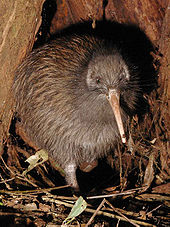 New Zealand is south-east of Australia and has a more temperate climate, although it is still closer to the equator than southern Canada, so the temperatures are somewhat milder overall. During winter, snowfall is common in the eastern and southern parts of the South Island and mountain areas across the country.
New Zealand is south-east of Australia and has a more temperate climate, although it is still closer to the equator than southern Canada, so the temperatures are somewhat milder overall. During winter, snowfall is common in the eastern and southern parts of the South Island and mountain areas across the country.The country geographically comprises two main land masses—the North Island and the South Island and around 600 smaller islands. Because of its remoteness, it was one of the last lands to be settled by humans. During its long period of isolation, New Zealand developed a distinct biodiversity of animal, fungal and plant life such as the Kiwi. The country's varied topography and its sharp mountain peaks, such as the Southern Alps, owe much to the tectonic uplift of land and volcanic eruptions. New Zealand's capital city is Wellington, while its most populous city is Auckland. Auckland was not one of the ports we visited.
The Kiwi, a flightless bird, is a national icon. The word Kiwi is often used to refer to people from New Zealand.
Port of Call: Milford, Doubtful and Dusky Sounds in Fjordland
Around 6 a.m., those that wanted to view the approach into Milford Sound had to be on deck. The temperature was around 12 degrees C. In other words, it was cold and dark. We were surprised to see how many people had brought winter jackets and sweaters for this cruise that was all taking place during the hottest part of the southern summer! It was lovely to watch the sunrise. Hamish Angus, a New Zealand fjord expert, was on hand to provide commentary giving us information as we made our way through the fjords.
Described by Rudyard Kipling as the 'eighth wonder of the world', Milford Sound was carved by glaciers during the ice ages. The Maori believed it was a godly mason who carved Milford Sound which is a befitting explanation for such a perfectly sculpted work of art. It is the most famous sound in Fjordland. Milford Sound is breathtaking in any weather. The fjord's cliffs rise vertically from the dark waters, mountain peaks scrape the sky and waterfalls cascade downwards, some as high as 1000 metres. When it rains in Milford Sound, and it often does, those waterfalls multiply with magnificent effect. A couple dozen passengers got off at the town of Milford and stayed overnight in a hotel. They then traveled by train across the country to Dunedin where they met up with us. Everyone who booked this tour said that it was wonderful and well worth the money. I will have to remember for next time.
 |
| During the wee hours of the morning. The sun is just coming up. |
 |
| Passengers waiting for the clouds to clear |
 |
| The clouds are very low as we move into the sound |
 |
| The sun is coming through now. |
 |
| Many waterfalls are seen especially at this time of year. This waterfall provides electricity to the Town of Milford. |
 |
| Passengers are lined up along the railing to see the landscape |
Photos of Doubtful and Dusky Sounds:
Port of Call:Dunedin
This day did not start out great. We were the first to check in with the bus tour and we were told to stand "over there" and when ready we would be called to go to the bus. Well, we waited but we were not called and the tour guide and bus had left. Apparently the tour guide did not count the people as they went on the bus and he thought he had everyone. The tour company was very apologetic and they got another bus to swiftly take us into town to catch up with the original bus. So we finally got there and everyone was on the train waiting for us.
After that the day went well. We took an half day excursion on the Taieri Gorge Train. We felt the rattle and rumble of the vintage railcar as we wound through the mountains of Taieri River Gorge. Spectacular scenery and lots of bridges and tunnels.
 |
| Shadow of the train crossing a trestle |
 |
| Another view of the train's shadow |
 |
| This was formerly a crossing station. The railway house, splendidly isolated, is now a holiday home. |
 |
| At Hindon Station A memorial dedicated to the collie sheep dogs that have worked this land for the last 150 years |
 |
| Interior of train |
 |
| Old switch |
 |
| One range house near Pukerangi -- meaning "hill of Heaven" |
 |
| The Dunedin Railway Station. The most photographed building in New Zealand |
The last stop was at the steepest street in the world. See the video below. Nothing else needs to be said.
Doesn't look so steep from the photos above, but look at the angle of the house below. The house is level but the street is not!
Port of Call: Akaroa
Akaroa is uniquely the only French colonial settlement in the country. Set on a stunning waterfront and surrounded by craggy volcanic landforms, it is a relaxed and pleasant holiday town just 82 kilometres from Christchurch.
 |
| This is Beach Road, the main scenic street and close to the wharf. A good place to stroll ... or sit and look at the harbour. |
 |
| Al is in the boat going out to swim with the dolphins |
Port of Call: Wellington
Wellington was one highlight I really enjoyed. Wellington celebrates its reputation as the world's coolest "little" capital. There's no shortage of big city culture and energy in New Zealand's national centre.
The Lord of the Rings movies were filmed in New Zealand and that has been a big boost for the economy, both on the production side as well as for the tourism that it has continued to attract. We went on a Lord of the Rings tour which included several of the filming locations and a visit to the workshop studio where many of the creatures and costumes were created.
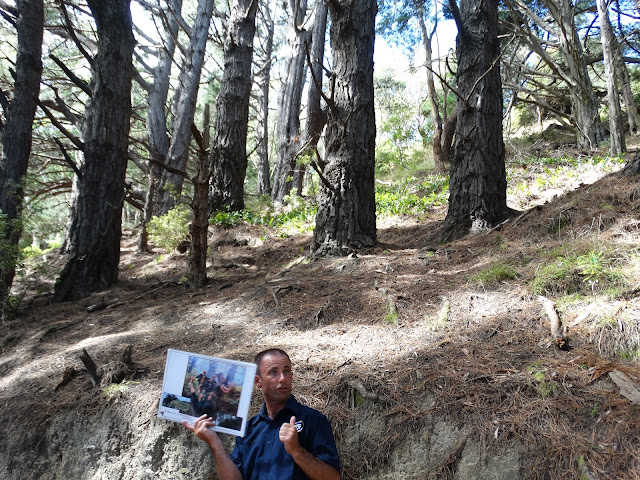 |
| The trees behind are in the scene below. |
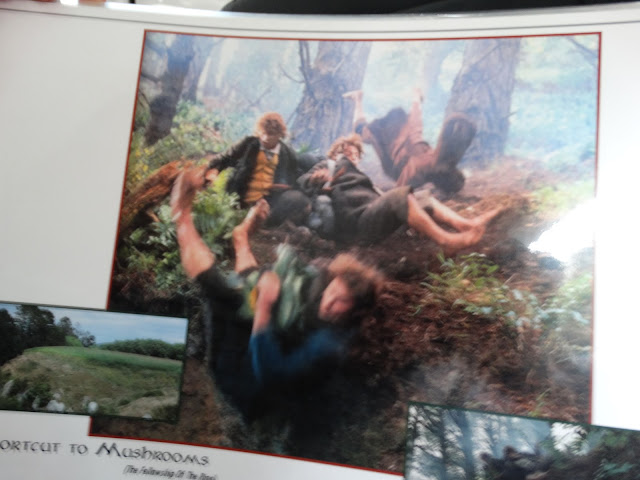 |
| After many, many takes this is the shot that went in the movie. It was the last take because the stunt double at the top did a face plant into the ground and was injured. |
 |
| The tree in the background is in the scene below. |
 |
| "I think we should get off the road". |
 |
| This scene is approximately 10 feet away from the scene above. The hollow spot where they are hiding is still there. It is so small and the large tree which was brought in for the scene is gone. |
From this location in the park we travelled by the actual studio and saw the largest outdoor green screen in the world. The tour guide and the security guard play this game. Every day the tour bus drives by and slows down so his passengers can view the screen. The security guard gives him a scowl and closes the high gate so no one can see past.
Next stop was the Roxy, a vintage movie theatre where Peter Jackson enjoys attending movies. Outside the theatre is a statue of Gandalf.
Our last stop is the Weta Workshop where the creatures and weapons of the Lord of the Rings movie were created. It was fascinating to see how various life-like creatures were born. We were not allowed to take photos inside the workshop because there were "top secret" things being developed.
 |
| Check out the price tag on this creation! |
We also saw a 15-minute video on the development of Weta Workshop which was very interesting. The whole tour of the filming of the Lord of the Rings was my highlight of the trip. One thing that we missed was that we did not go to the area where the Shire was.
Port of Call: Picton
It was a rainy, dreary day when we got to Picton so there was not much to do. We had not booked a tour for the day so all we did was visit the shops on the main street and go to the library to catch up with some blogging. Some people who had pre-booked a tour continued with it and had a great time. Lesson learned: Know more about the port before you go to it and maybe pre-book a tour.














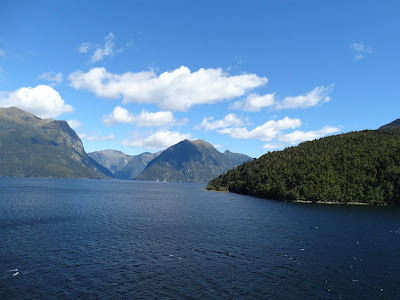










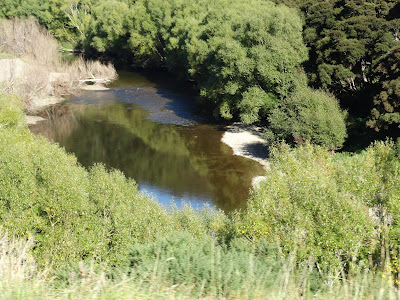














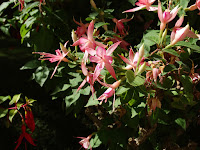



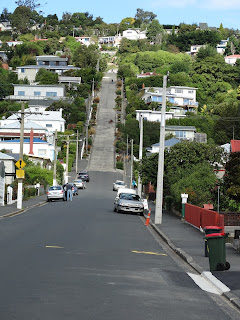























No comments:
Post a Comment